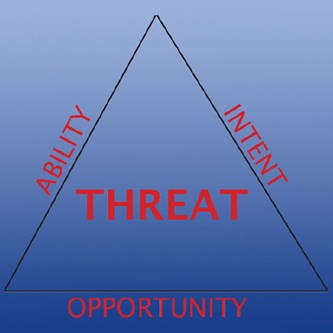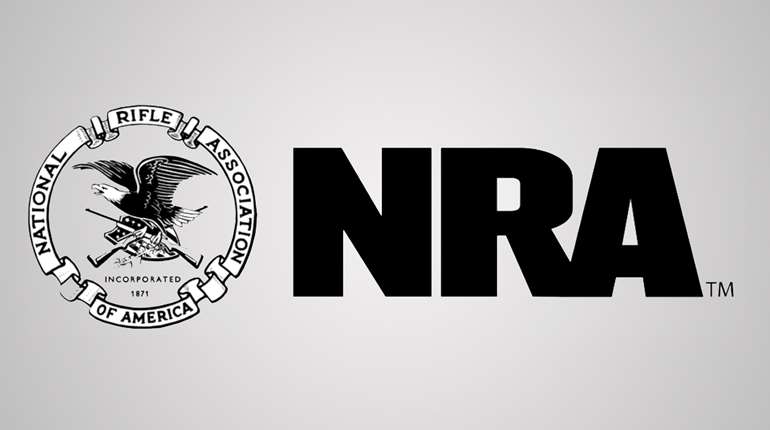
If you carry concealed or keep firearms at home, it’s very important that you have an understanding of what constitutes self-defense and when you are allowed to use it. Definitions and justifications vary depending on your state, so read up on local laws and case studies. In the heat of the moment, you won’t be able to pause a deadly encounter while you run down a checklist to make sure you’re justified in using your firearm or other defensive tool. That said, the time to think about these things is now, while you’re calm and rational, and not in the middle of a self-defense emergency. This is the time to embrace a threat assessment model.
You need one for two reasons. First, a good understanding of a solid threat assessment model will help you make the “am I justified in using self-defense” decision in the heat of the moment. And second, if you should ever fire your gun in self-defense, you will deal with at least some level of legal aftermath. Understanding a threat assessment model will help you articulate why you did what you did and how you knew it was necessary. This can go a long way in smoothing out the legal path before you. The important thing is that you have the framework in place now so you’ll be able to explain all of it later.
 There are many threat assessment models you can use, but for its simplicity, I like AOI: Ability, Opportunity, Intent. You might also see this called AOJ: Ability, Opportunity, Jeopardy. Generally speaking, and with some exceptions depending on your state, you are not legally or morally justified in using deadly force to protect yourself unless all three elements of AOI are present. Let’s look at each component of AOI and what you should know about it. As a disclaimer, I am not a legal professional and this is not legal advice.
There are many threat assessment models you can use, but for its simplicity, I like AOI: Ability, Opportunity, Intent. You might also see this called AOJ: Ability, Opportunity, Jeopardy. Generally speaking, and with some exceptions depending on your state, you are not legally or morally justified in using deadly force to protect yourself unless all three elements of AOI are present. Let’s look at each component of AOI and what you should know about it. As a disclaimer, I am not a legal professional and this is not legal advice.
Ability
You are not in sufficient danger to justify the use of deadly force unless the person attacking you has the actual physical ability to cause you bodily harm. That ability can take different forms depending on who you are and who the attacker is. If the person has a gun, knife or other weapon and you’re close enough for them to use it, Ability is established. A weapon isn’t strictly necessary for Ability, though. All it takes is what we call a “disparity of force.” If you are a 120-lb. woman, a healthy 200-lb. man almost certainly has the ability to harm you. If you are a person with a disability or someone who is somehow trapped or incapacitated, nearly any adult has the ability to harm you.
Conversely, an NFL linebacker is going to have a hard time arguing that his 130-lb. girlfriend had the ability to cause him bodily harm if she is unarmed. If two people are approximately the same size and strength but one is a black belt in a martial art, that person probably has Ability over the other. If two people are tussling and one is pinned against the ground, the other person probably has Ability over the one who is helpless. In just about any situation where multiple people are attacking one person, Ability is automatically established.
You should know it’s generally recognized that able-bodied men automatically have Ability over women regardless of each individual’s size. That means a man doesn’t have to be armed to represent a physical threat to you.
Opportunity
You are not in sufficient danger to justify the use of deadly force unless the person attacking you has the immediate opportunity to cause you bodily harm. This usually equates to physical distance. A guy screaming and waving a knife at you from across a busy highway with a median does not have the opportunity to stab you right now, and you can’t shoot him. A nasty social media commenter who leaves death threats on your hunting photos doesn’t have the immediate opportunity to cause you physical harm.
Opportunity is especially relevant to women who are in physically abusive relationships or who are dealing with stalkers. A woman whose estranged abusive boyfriend or stalker is threatening to harm her can go get a restraining order, but she is not legally justified to preemptively shoot him before he has a chance to follow through on his threats.
Opportunity also applies to immediacy. If you are in a heated argument with someone and they say “I’m going to my house to get a gun, and then I’m coming back here to shoot you,” you’re not legally justified to shoot that person on the spot because they don’t have the opportunity (and maybe ability) to harm you right now.
Intent
You are not in sufficient danger to justify the use of deadly force unless the person attacking you has demonstrated the intent to cause you bodily harm. Someone who screams “I’m going to kill you!” has established Intent. Someone who points a gun at you and tells you do something has established Intent.
Verbal warnings or threats aren’t required to establish intent, though. A woman who waves a knife around and runs straight at you making slashing motions is clearly establishing that she’s intent on harming you, even if she doesn’t say a word. In some states, a person breaking into your home automatically establishes their intent, particularly if it’s at night. You need to know if this is the case in your state (typically part of Castle Doctrine laws).
Be aware that Intent is usually a conscious decision, but not always, and that’s why some people prefer the word Jeopardy. Someone in the midst of a psychotic or drug-fueled episode might be unaware or not in control of what they’re doing, but your life could nonetheless be in danger by their actions, whether or not they really “want” to hurt you.
All Three Must Be Present
There are tons of everyday situations where two elements are established, but without the third, you are in no danger at all or at least not sufficient danger to justify deadly force. For example:
- An angry 90-year-old granny in a wheelchair screaming that she’s going to kill you has the opportunity to harm you (she’s close to you) and the intent (which she’s clearly stated), but she probably doesn’t have the ability unless she’s hiding a pistol under her afghan. She’s just not physically capable.
- An abusive ex-boyfriend who is leaving death threats on your voicemail has demonstrated ability (he’s either armed or bigger than you) and intent, but when he’s across town, he does not have the opportunity to cause you bodily harm.
- The open-carry advocate who sits down at the next table in a restaurant has the ability (he’s armed) and the opportunity (you’re within range) to cause you bodily harm, but he has demonstrated no intent. He’s just a guy peacefully going about his day and is no threat to you.
- Don’t forget the immediacy aspect of Opportunity. A mugger who steals your wallet at gunpoint and then runs away demonstrated ability (he had a gun), opportunity (he was within feet of you), and willingness/intent (he pointed it at you). But if he’s running away now, he had AOI in the past but might not have them in the present. If you shoot him in the back as he’s running off, you’re probably in serious trouble.
You already know all of this stuff intuitively, but it’s important that you sit down and give it some thought. Now’s the perfect opportunity to establish a threat assessment model that works for you so you’ll have access to the information and be able to clearly explain yourself should you ever need to.















































